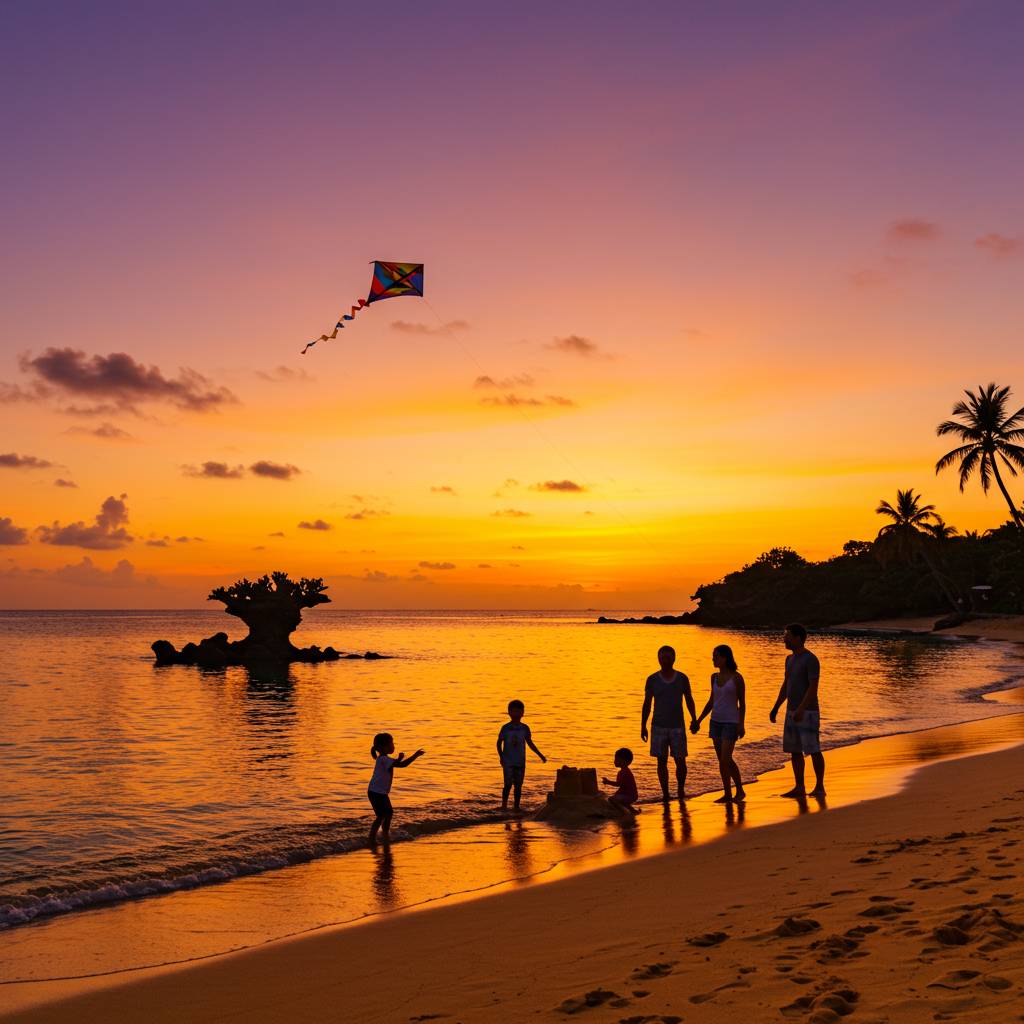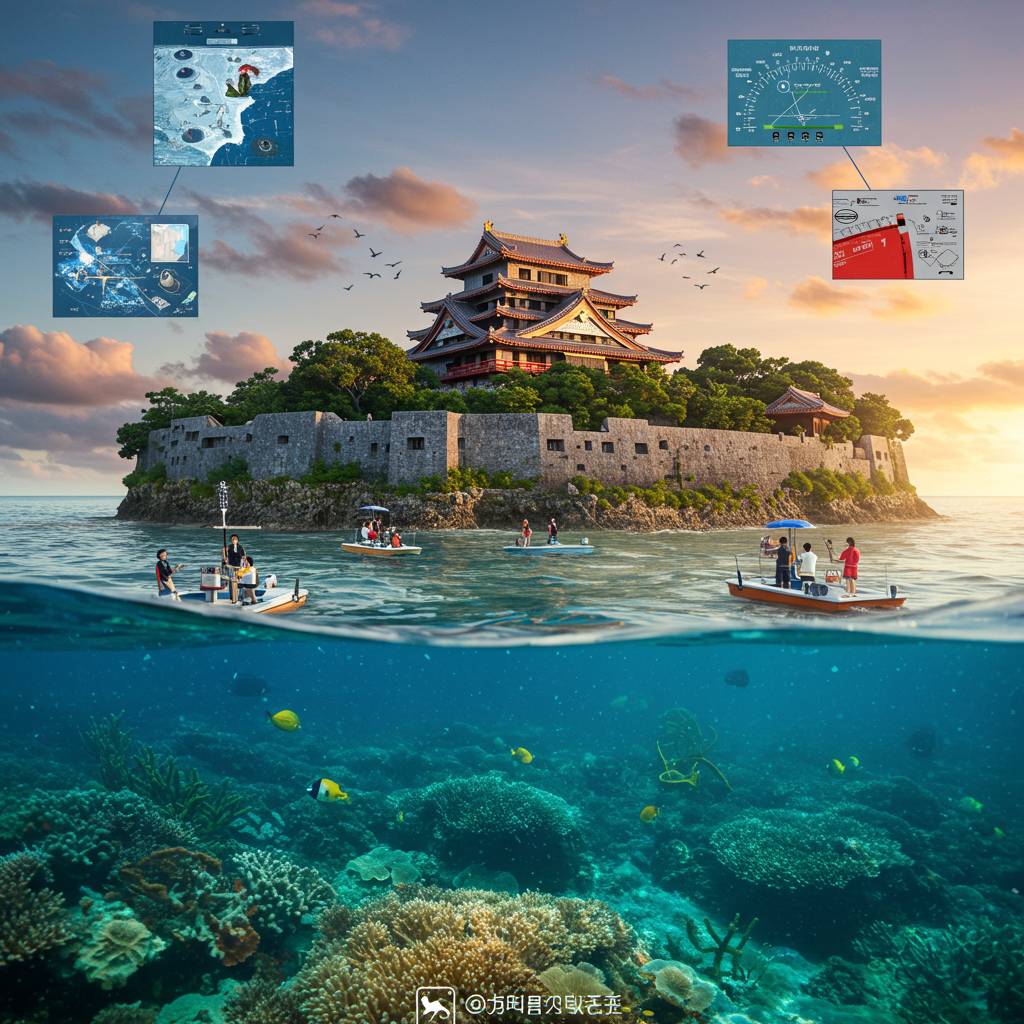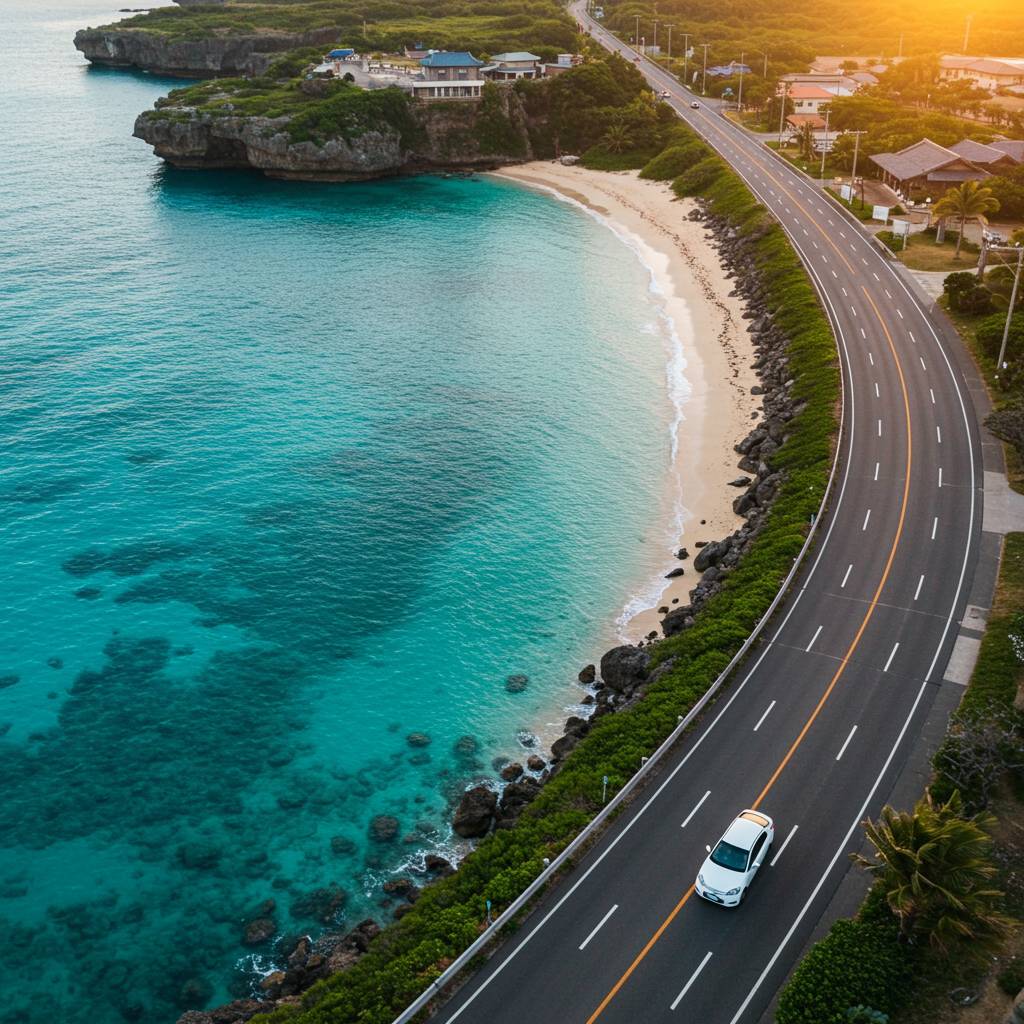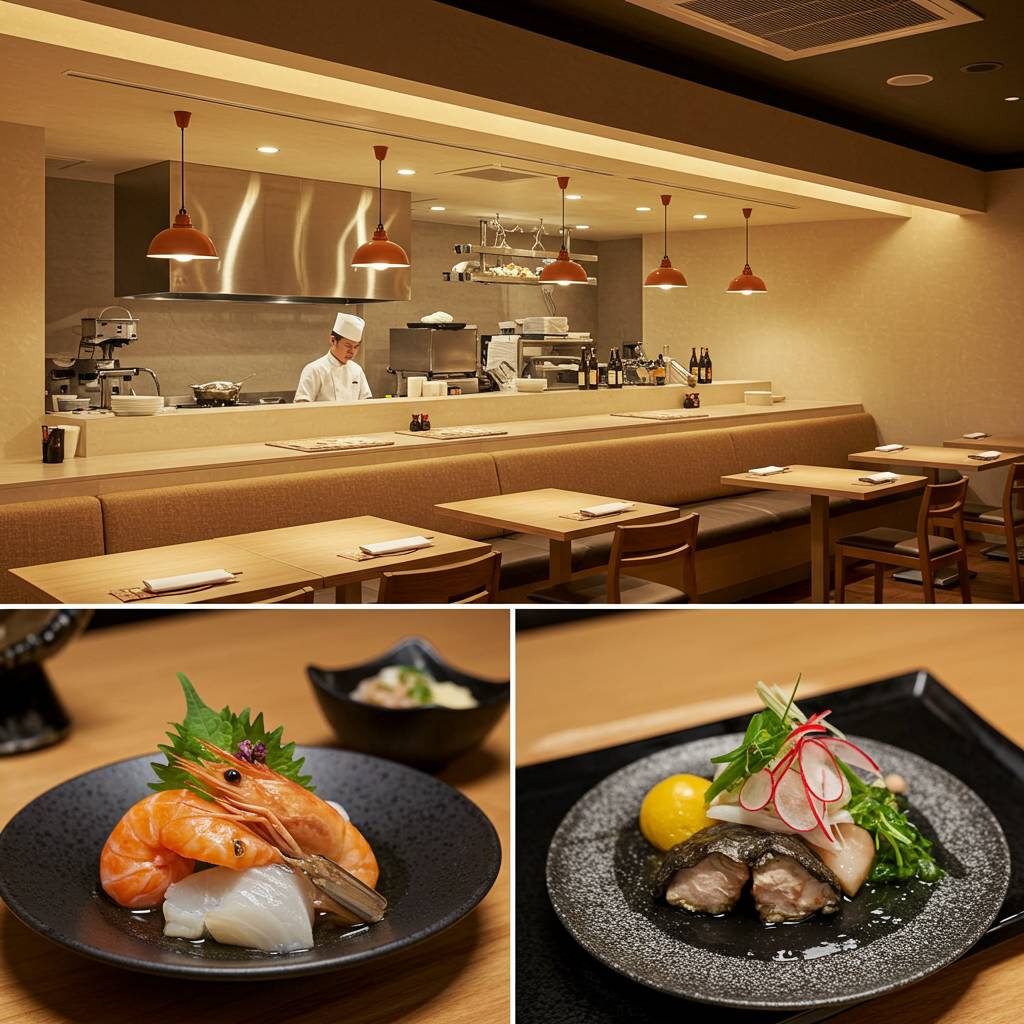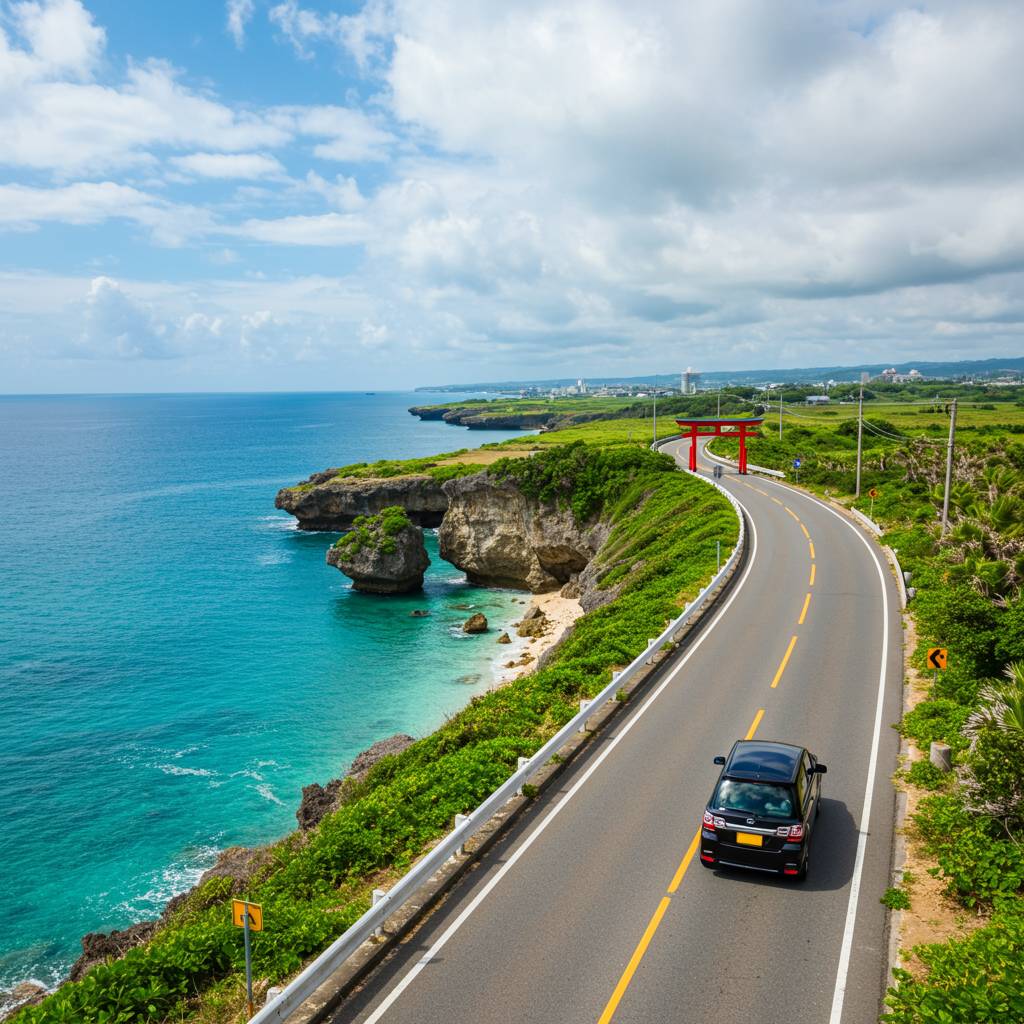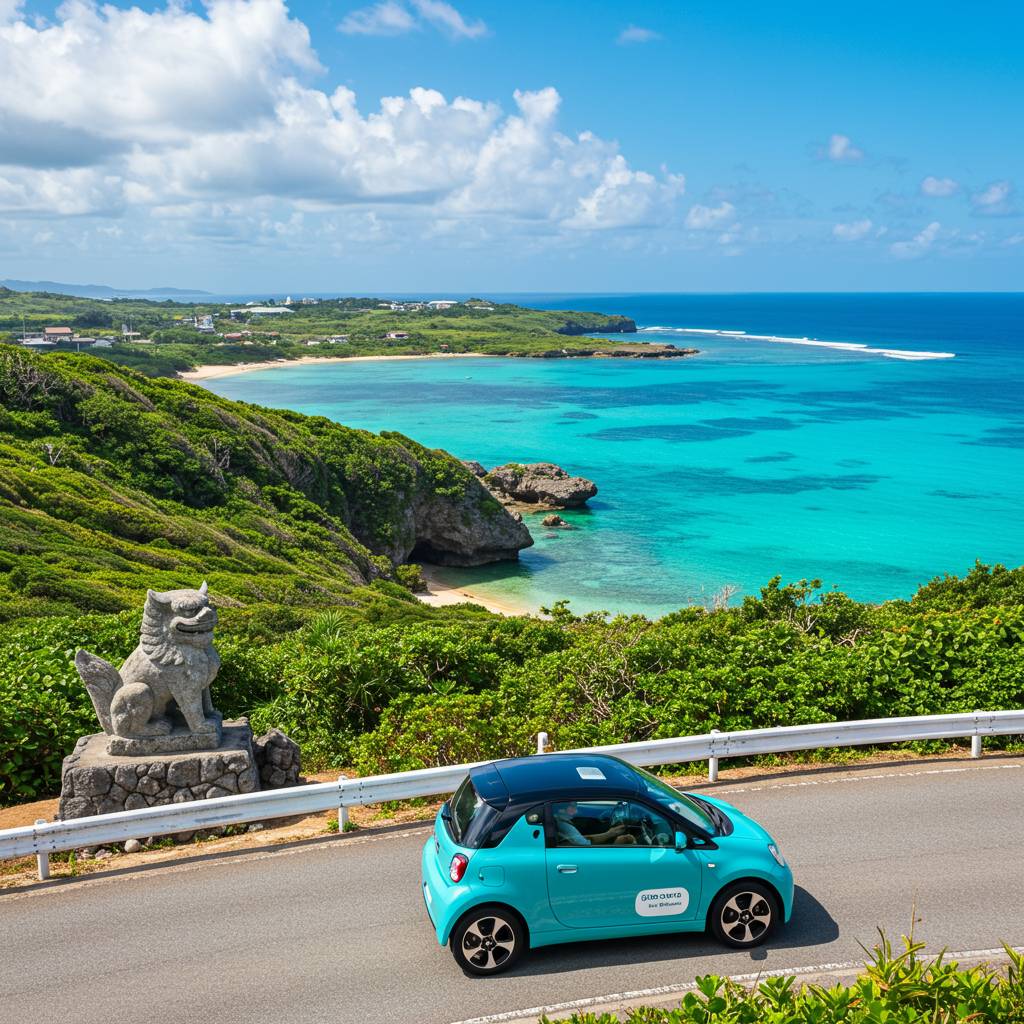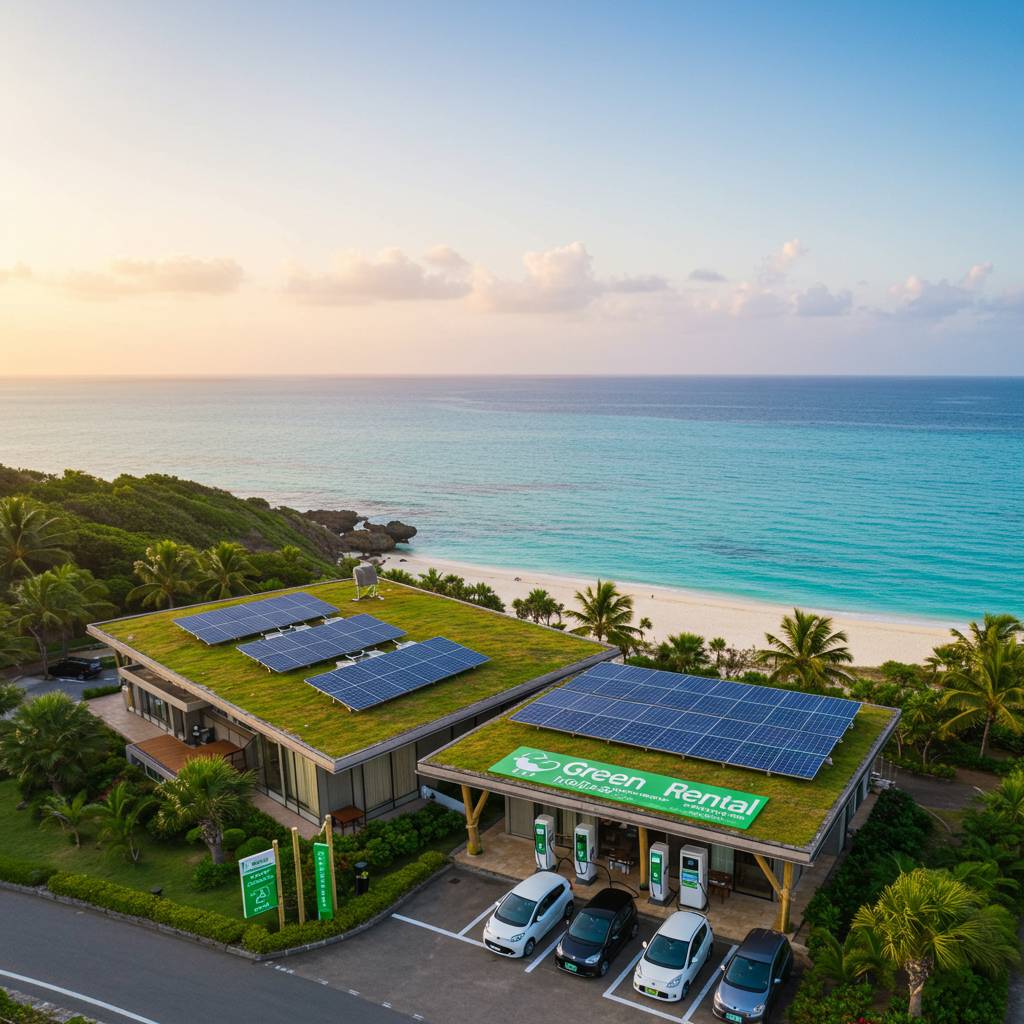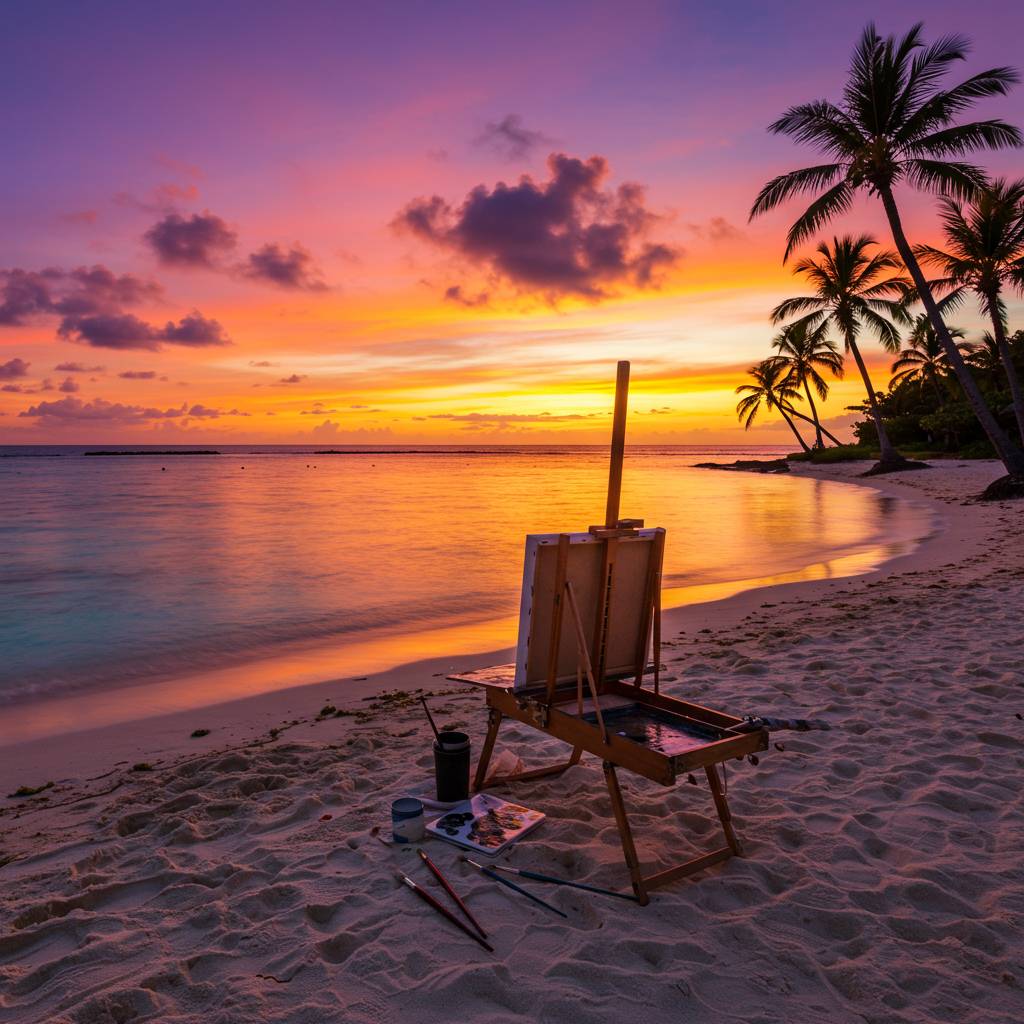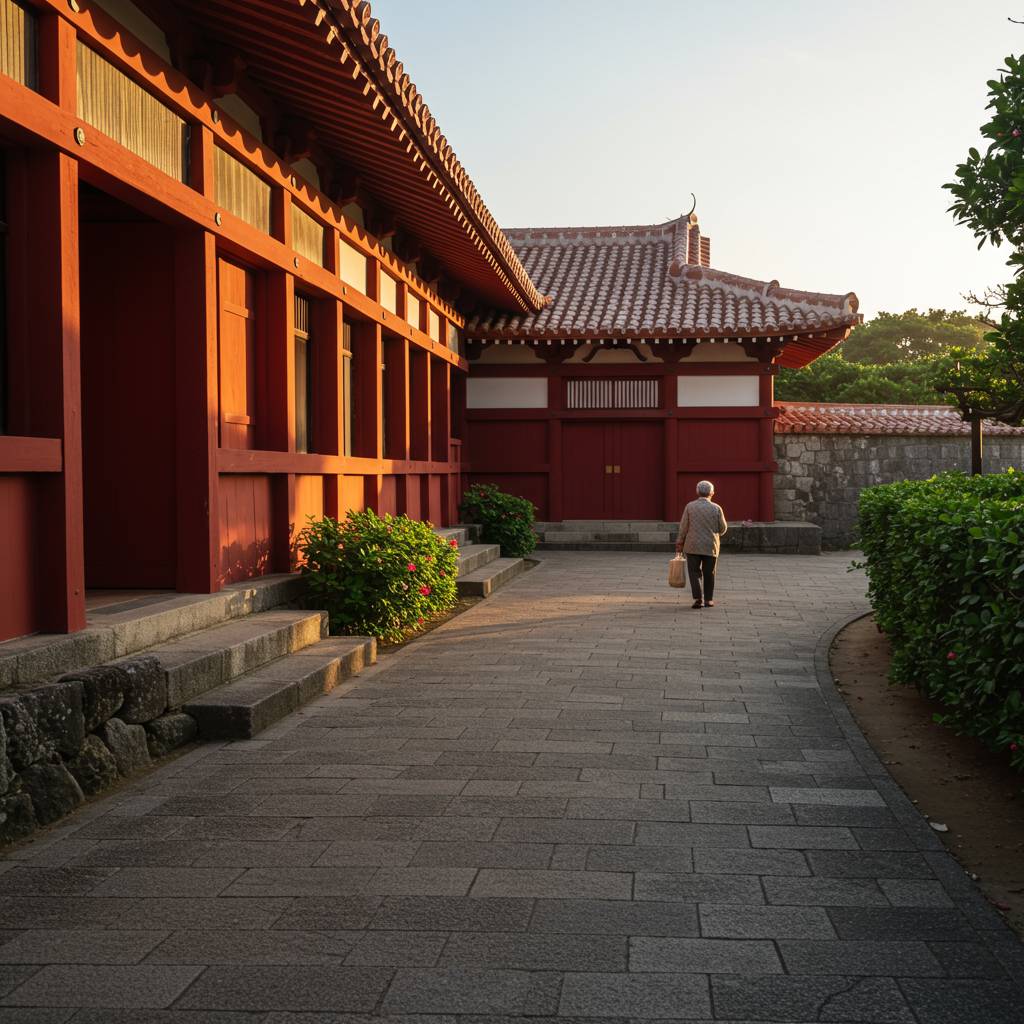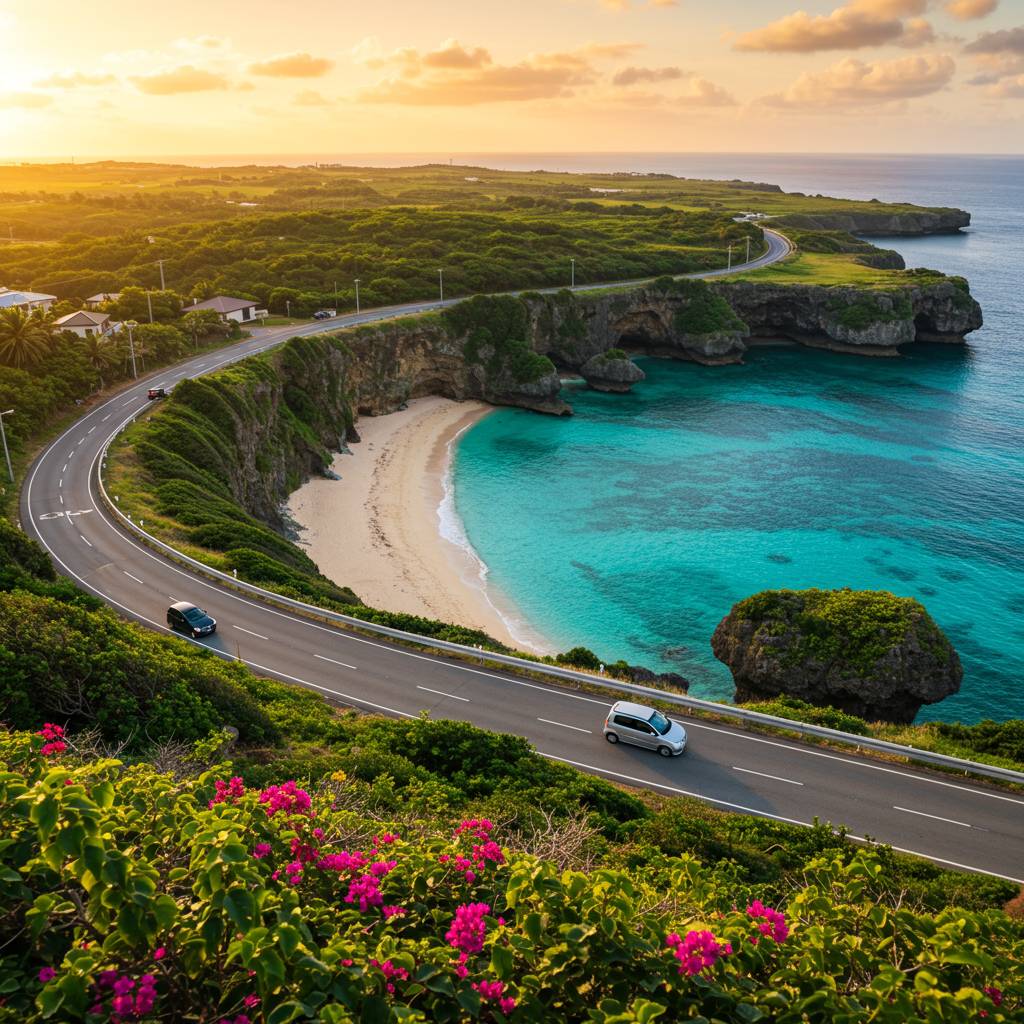Are you planning a family vacation to the enchanting island of Okinawa? As the day transitions into evening, Okinawa’s beaches transform into magical settings that offer unforgettable experiences for families. The golden hour casts a warm glow across the pristine shores, creating the perfect backdrop for memory-making activities that both children and adults will cherish.
Okinawa’s sunset beaches provide more than just stunning views – they offer a unique opportunity to engage with nature, explore marine life, and connect as a family away from digital distractions. Whether you’re looking for active adventures or peaceful moments to appreciate the natural beauty, these sunset hours are truly special on Japan’s southernmost prefecture.
In this comprehensive guide, I’ll share the most delightful family-friendly activities to enjoy as the sun dips below the horizon on Okinawa’s magnificent beaches. From traditional Okinawan cultural experiences to marine exploration opportunities that will fascinate children of all ages, these sunset activities will become the highlight of your family’s island adventure.
1. 10 Magical Sunset Activities for Families on Okinawa’s Pristine Beaches
Okinawa’s beaches transform into magical playgrounds as the sun begins its descent, painting the sky with vibrant hues of orange, pink, and purple. These golden hours offer the perfect backdrop for unforgettable family experiences away from the midday heat. Here are ten enchanting sunset activities that families can enjoy on Okinawa’s breathtaking shores:
1. Sunset Sandcastle Competitions: Challenge family members to build the most creative sandcastle while the setting sun casts long shadows across your masterpieces. Bring small prizes for different categories like “Most Detailed” or “Most Imaginative.”
2. Beach Treasure Hunts: Create a scavenger hunt list with items like unique shells, smooth stones, or interesting driftwood. The golden light makes spotting treasures both easier and more exciting.
3. Tidal Pool Exploration: As the tide recedes during sunset, discover miniature marine ecosystems in tidal pools. Spot colorful fish, tiny crabs, and sea anemones at beaches like Maeda Flats or Manza Beach.
4. Flying Kites: The evening sea breeze at Tropical Beach or Emerald Beach creates perfect conditions for kite flying. Watch your colorful kites dance against the sunset backdrop.
5. Shadow Photography: Capture silhouette photos against the dramatic sunset. These make for frame-worthy family mementos that perfectly preserve your Okinawa memories.
6. Beach Yoga: Many Okinawan beaches host family-friendly sunset yoga sessions. The tranquil atmosphere of Araha Beach makes it ideal for gentle stretching and mindfulness as a family.
7. Sunset Picnics: Pack a special bento dinner to enjoy on beaches like Sunset Beach (aptly named) in American Village. The comfortable evening temperature makes dining al fresco delightful.
8. Glowing Beach Games: Bring glow sticks or LED balls for twilight beach games. As darkness falls, games like glow-in-the-dark frisbee or beach bowling take on a magical quality.
9. Stargazing Beginnings: After sunset at remote beaches like Hatenohama or Kouri Island, stay a little longer to witness the first stars appearing. Bring a star chart to identify constellations with your children.
10. Traditional Eisa Dance Learning: Some beaches host informal Eisa dance lessons during sunset hours. Join locals in learning basic moves of this traditional Okinawan folk dance, often performed at Naminoue Beach.
Remember to bring light jackets as ocean breezes can cool the evening air, plenty of water, and environmentally friendly insect repellent. Most importantly, pack out everything you bring to these pristine shores, preserving their beauty for future sunset adventures.
2. The Ultimate Guide to Creating Unforgettable Family Memories at Okinawa’s Sunset Beaches
Okinawa’s sunset beaches transform into magical playgrounds when the golden hour approaches. Creating lasting family memories during this special time requires minimal planning but yields maximum joy. Start by selecting the right beach for your adventure – Emerald Beach at Ocean Expo Park offers safe swimming areas with lifeguards, while Sunset Beach in Chatan provides convenient facilities and nearby dining options.
Pack a simple “sunset kit” including beach blankets, light snacks, reusable water bottles, and beach toys that glow or reflect light. Sand castle building competitions take on a new dimension as the setting sun casts long shadows across elaborate creations. Consider bringing along small LED lights to outline your masterpieces as darkness falls.
Photography opportunities abound during sunset hours. Capture silhouettes of family members jumping against the orange sky or arrange everyone for a classic group photo with nature’s perfect backdrop. Many local photographers can be booked in advance for professional sunset family portraits at beaches like Manza Beach or Nirai Beach.
For active families, beach volleyball or frisbee games in the cooler evening air provide perfect energy outlets. Kouri Island’s connecting bridge offers a spectacular sunset view for families who prefer a short walk to sitting on the sand. Afterward, children can collect seashells which appear to change colors in the fading light.
Marine life observation becomes especially rewarding during sunset transitions. At Toguchi Beach, shallow tide pools reveal small fish, crabs, and sea stars as the tide recedes. Bring magnifying glasses for young explorers to examine these treasures up close.
Local culture can be incorporated through beach activities like learning simple Okinawan dance movements as the sun sets or listening to traditional folk tales about the ocean. Some beaches feature special sunset events during summer months, including Okinawan taiko drum performances at Araha Beach.
For a truly memorable experience, consider a sunset kayak tour suitable for families with older children. Companies like Marine House Seasir offer guided excursions that provide safety equipment and instruction for all skill levels.
As darkness falls, beaches like Zanpa transform with fire performers practicing their craft. While maintaining a respectful distance, children are often mesmerized by these impromptu shows. End your evening with stargazing – Okinawa’s relative distance from major cities means constellations appear with remarkable clarity once night fully arrives.
3. Discover Okinawa’s Best-Kept Secrets: Family Beach Activities as the Sun Goes Down
As the golden hour approaches on Okinawa’s pristine shores, a magical transformation takes place. The beaches that bustled with daytime activities now offer a more serene yet equally enchanting experience for families. While tourists flock to popular spots like Sunset Beach in American Village, locals know that the real magic happens away from the crowds.
Emerald Beach at Ocean Expo Park becomes a natural aquarium at dusk, with tide pools revealing colorful marine creatures rarely seen during daylight hours. Bring small flashlights and watch your children’s eyes light up as they discover tiny octopuses, starfish, and hermit crabs in their natural habitat. The park staff occasionally offers guided sunset exploration tours that combine education with adventure.
For a truly memorable experience, head to Kouri Island’s heart-shaped rocks at sunset. The 2-kilometer bridge journey itself builds anticipation, and the island’s western beaches offer unobstructed sunset views. Many families bring portable picnic sets to enjoy dinner with a view. The shallow, calm waters remain warm even as evening approaches, perfect for younger children to splash safely.
Sunset Beach yoga has become increasingly popular among families with older children. Several instructors, including those from Yogaku Studio in Chatan, offer family-friendly sessions timed perfectly with the setting sun. These classes blend gentle movement with mindfulness, helping children wind down after exciting island adventures.
Sand sculpting competitions gain a new dimension during sunset hours when the low-angled light creates dramatic shadows that showcase intricate details. Bring buckets, shovels, and your imagination to Azama Sunsan Beach, where the fine white sand holds its shape beautifully. Local artists sometimes wander these shores, offering impromptu tips to aspiring sand sculptors.
The bioluminescent shores of Okinawa remain one of the island’s best-kept secrets. On moonless nights at certain beaches like Kise Beach in Nago, gentle wave movements activate natural phytoplankton that glow a mesmerizing blue. Wade into shallow waters and watch as your movements create trails of ethereal light—a science lesson and magical experience combined.
Gather around a small beach bonfire (where permitted, such as designated areas of Ikei Island) for traditional Okinawan storytelling. Local guides from Ryukyu Village Cultural Center occasionally host these sessions, sharing legends of sea gods and ancient kingdoms that once ruled these shores.
Remember to check tide schedules before planning your sunset adventures, as some activities are best enjoyed during specific tidal conditions. Also, while the daytime heat subsides, mosquito repellent remains essential for comfortable evening experiences on Okinawa’s beaches.
For rental car reservations in Okinawa, visit “RENT A CAR HIROBA”
Make the best memories of your trip at the rental car plaza!
Click here to reserve a rental car ↓
・Cheap rental cars in Okinawa are at the lowest price starting from 1,500 yen. Rent-a-car Hiroba is recommended for reservations and comparisons.
https://rentacar-hiroba.com/

